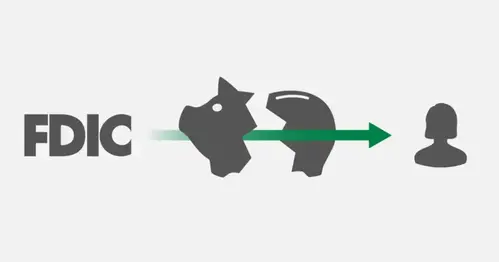
How the FDIC prevents bank failures and limits contagion effects
When the federal government announced it would guarantee all accounts at Silicon Valley Bank and Signature Bank after they became the second- and third-largest bank failures in U.S. history, it relied on a system put in place almost a century ago.
The Federal Deposit Insurance Corporation, or the FDIC, has guaranteed deposits — up to certain thresholds — at American banks since the early days of the New Deal in 1933. The agency’s operations are designed to reassure depositors that their money is safe in the nation’s banking system.
The insurance program also limits the risk of a contagion effect by helping to prevent one bank’s failure from turning into a financial panic that jeopardizes others. While SVB’s collapse last Friday put depositors and investors on edge, threatening the stability of some other lenders as well, the country’s broader banking system so far remains rattled but intact.
“Americans can feel confident that their deposits will be there when they need them,” Treasury Secretary Janet Yellen told lawmakers in testimony Thursday.
Here’s how the FDIC’s insurance system, and the fund that supports it, are set up to operate:
The full guarantee of depositors’ money is covered by the FDIC’s Deposit Insurance Fund, a pool supported by fees that the agency routinely charges financial institutions. The FDIC requires banks to contribute funding to the Deposit Insurance Fund that can be used to compensate depositors up to its $250,000 limit.
However, if regulators deem a failed bank “systemically important” — which they did with regard to SVB and Signature over the past week — its depositors can be paid out for balances exceeding that cap. The insurance cap has been raised multiple times in the program’s history, most recently during the 2008 financial crisis.
Yellen was asked to clarify on Thursday whether the government would backstop all bank customers whose funds exceed the FDIC’s $250,000 limit, after it did so for SVB and Signature.
Her answer: A bank “only gets that treatment” if regulators determine it meets certain criteria indicating potentially systemic risk from a collapse. As a result, she cautioned, depositors at other banks may not be guaranteed such robust protections, and the FDIC’s standard $250,000 cap continues to apply.
Because the Deposit Insurance Fund isn’t supported by taxpayer money, the Biden administration has argued that the backstop move doesn’t constitute a bailout.
The systemic risk exception has been invoked before. In 2008, the federal government used it to address the mortgage crisis, which imperiled several large U.S. banks.
Source: https://www.nbcnews.com/data-graphics/fdic-bank-collapse-deposit-insurance-rcna75066






